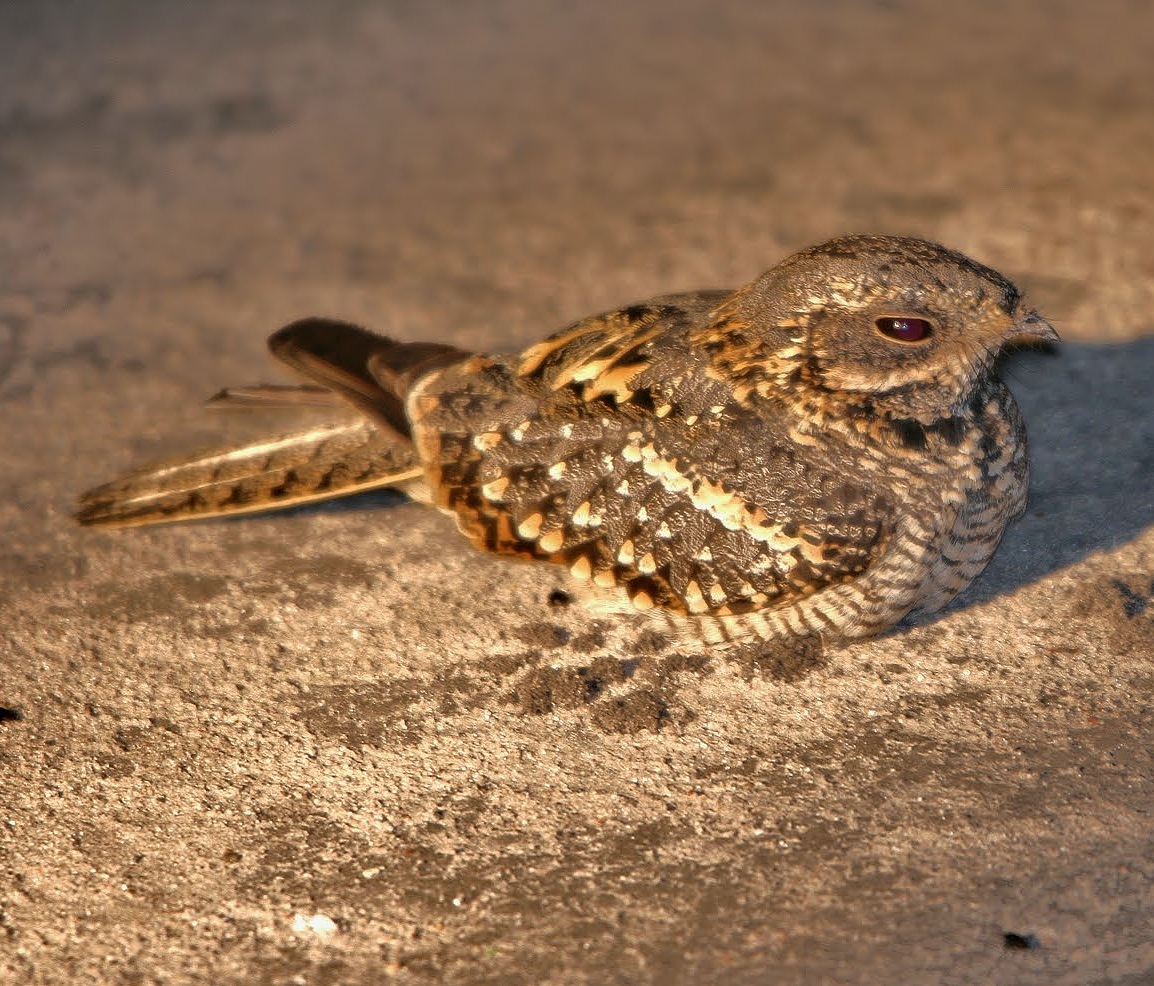 |
| (Photo from River’s Wild Notes) |
Common name:
rufous-cheeked nightjar (en); noitibó-de-faces-ruivas (pt); engoulevent à joues rousses (fr); chotacabras carirrojo (es); rostwangen-nachtschwalbe (de)
Taxonomy:
Order Caprimulgiformes
Family Caprimulgidae
Range:
This African species is found from Angola, Zambia and Zimbabwe, through Namibia and Botswana and into South Africa and western Mozambique.
Size:
These birds are 24 cm long and weigh 50-60 g.
Habitat:
The rufous-cheeked nightjar is mostly found in dry savannas and open mopane and miombo woodlands, but also in dry scrubland, freshwater marshes, plantations and arable land. They are present from sea level up to an altitude of 1.600 m.
Diet:
They are strictly insectivorous, taking beetles, butterflies and moths, cockroaches, termites, mantids, lacewings, grasshoppers, wasps and ants.
Breeding:
Rufous-cheeked nightjars breed in September-March. They nest in a natural, shallow depressions in coarse soil, where the female lays 1-2 light reddish-brown eggs with lilac markings. The eggs are incubated for 15-17 days. The chicks are fed by both parents and fledge 18-20 days after hatching.
Conservation:
IUCN status – LC (Least Concern)
This species has a very large breeding range and is reported to be locally common. The population is suspected to be stable in the absence of evidence for any declines or substantial threats. The rufous-cheeked nightjar is in fact tolerant of areas disturbed by humans.







